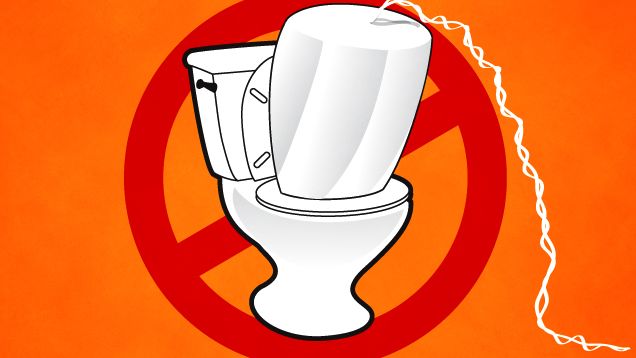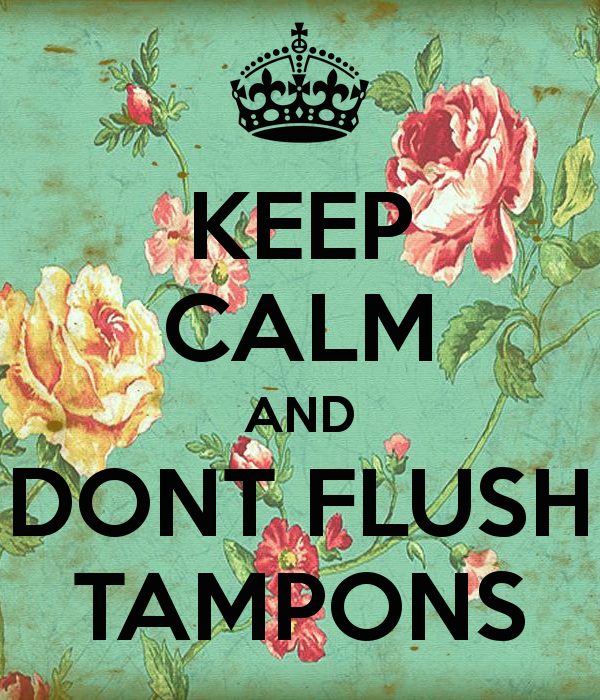
Attention needs to be brought to the nuisance of flushing women’s sanitary products.
In 1991, the Chicago Tribune wrote that the makers of Tampax tampons had been working diligently to absolve their commitment to reducing environmental waste with the makings of their product: applicator-based tampons.
Despite the cardboard applicators being made with decomposing capabilities, plastic applicators were washing up on beaches in swarms and controversy arose over “the basis for its claim of dedication to ‘preserving our environment,’” according to Tribune writer Knight-Ridder. The Federal Trade Commission responded that they were conducting studies on how to regulate guidelines for “environmentally friendly” manufacturing.
On average, American women get their first period at 12-years-old and enter menopause at age 51. According to that, it is supposed that a mere 38 bloody years equates to over 9,000 tampons. On top of that, more than 70 percent of women use more than one product during their menstrual cycle, according to the Huffington Post. It’s likely to assume that some people dispose of all products the same — down the drain.
In 26 years, no sort of regulation has been set forth for tampon manufacturing. Without a second thought, people push down a handle and watch a waterfall whisk away their waste, but plausible deniability is ignorance and it’s time someone says it: tampons should not be flushed! Flushing a single tampon creates a manifestation of problems for not only the environment but any and all water infrastructure in which it travels.
For pipes’ sake, do it for our ocean!
Unlike toilet paper, tampons will not break down in water. In fact, they are made to do the exact opposite. Possibly even worse is that tampons don’t immediately clog up your toilet after one flush, so it may seem like they are safe to put down the toilet. Instead, flushed tampons build up over time, creating buildups in pipes and blockage in waterways that can raise acidity in water, lower PH levels and allow marine life to potentially ingest waste in the search for food.
Relying on a septic tank or the public sewage system to properly dispose of waste is irresponsible. In general, water waste has to travel through miles of pipelines. Somewhere along the way, some things are bound to be caught in the screening process, creating a buildup that is no longer filtered out of the system and not descended into the local landfill. Instead, this waste will float in our waterways and oceans for an unimaginable amount of time.
Additionally, discarded septic tank contents frequently wind up in landfills, which could cut out the waterway-middleman entirely by simply throwing tampons in the trash to begin with.
Blame it on the labels
To much surprise, the manufacturers of these products have been indirectly approving this sort of disposal. Manufacturers don’t make it very clear on the packaging what types of disposal methods are responsible. It might say somewhere on the packaging, in tiny text, to not flush or dispose of such-and-such in the trash, but it’s never explicit.
For example, the Playtex tampons first-time-user guide makes it seem like a matter of choice. According to the website, after removing the product, you can “flush the used tampon or place in an appropriate waste container.” Meanwhile, only Tampax’s site says to “dispose into a trash can,” but there’s no direction to use a trash can on the physical box or product wrapper.
While some assume that this is all common knowledge by now, proper tampon disposal is a topic that many major manufacturers do not openly communicate about on their online sites, except for U by Kotex, who surfaces on Google because of an open Q&A chat discussion about the disposal of tampons. People are still asking, and yet, only a few are listening.
In the chat room, a user mentioned there was no way to ensure that every public bathroom had a trash can or similar place to do so. Yes, there are definitely places without them, which is a bummer, but it is not a dead end. Take the extra step to properly dispose of waste now and in every walk of life. If it means finding the proper place, then take the time to do so.

Knowledge is power
Please do not flush tampons, pads or any other non-dissoluble product. It’s dangerous to everyone. It’s time to accept reality and realize that every action has a result. Making this a major issue now and taking care of it responsibly can create a whole lot less waste in the long run. Do your part!
